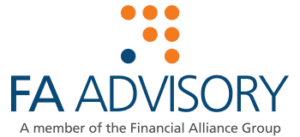When it comes to investing, one size does not fit all. Choosing the right investment strategy depends on your financial goals, risk tolerance, and time horizon. For Malaysian investors, understanding the differences between long-term and short-term investing is crucial to making informed decisions. This article will explore these two investment strategies, providing valuable insights to help you determine which approach suits you best.
Understanding Long-term Investments
What Are Long-term Investments?
Long-term investments are assets that you plan to hold for several years, typically five years or more. These investments are designed to grow steadily over time, taking advantage of compound interest and market growth
Examples of Long-term Investments:
- Stocks and Mutual Funds: Investing in reputable companies or mutual funds that have a history of steady growth can yield significant returns over time.
- Real Estate: Purchasing property to rent or sell in the future can provide both income and capital appreciation.
- Retirement Accounts: Contributing to EPF (Employees Provident Fund) or private retirement schemes helps secure your financial future.
Benefits of Long-term Investments:
- Compound Growth: Earnings reinvested over time can lead to substantial growth.
- Reduced Risk: The longer you hold investments, the more you can ride out market volatility.
- Tax Efficiency: Long-term investments often benefit from lower tax rates on capital gains.
Example: If you invested RM10,000 in Public Bank Berhad (PBB) stock in 2010 and held it until 2020, you would have seen significant appreciation due to the bank’s strong performance and consistent dividend payouts.
Understanding Short-term Investments
What Are Short-term Investments?
Short-term investments are assets that you plan to hold for a short period, typically less than three years. These investments are often used to achieve immediate financial goals or take advantage of market opportunities.
Examples of Short-term Investments:
- Money Market Funds: These funds invest in short-term, high-quality securities and provide liquidity with minimal risk.
- Certificates of Deposit (CDs): Fixed-term deposits with banks offer guaranteed returns over a short period.
- Trading Stocks: Buying and selling stocks within a short period to capitalize on market fluctuations.
Benefits of Short-term Investments:
- Liquidity: Quick access to your funds for other uses.
- Flexibility: Ability to adapt to changing financial needs and market conditions.
- Lower Risk: Reduced exposure to long-term market downturns.
Example: If you invested RM5,000 in a 1-year fixed deposit with CIMB Bank offering a 3% interest rate, you would earn RM150 by the end of the term, with minimal risk.
Comparing Long-term and Short-term Investments
- Risk and Volatility
- Long-term: Generally lower risk as time allows for recovery from market dips.
- Short-term: Higher risk due to market volatility, but lower risk for fixed-income securities.
- Long-term: Generally lower risk as time allows for recovery from market dips.
- Returns
- Long-term: Potential for higher returns due to compound interest and market growth.
- Short-term: Lower returns compared to long-term investments, but quicker access to funds.
- Long-term: Potential for higher returns due to compound interest and market growth.
- Goals and Objectives
- Long-term: Ideal for retirement planning, children’s education funds, or buying a home.
- Short-term: Suitable for building an emergency fund, saving for a vacation, or making a down payment.
- Long-term: Ideal for retirement planning, children’s education funds, or buying a home.
- Tax Considerations
- Long-term: Often more tax-efficient due to lower rates on capital gains.
- Short-term: Earnings may be subject to higher taxes depending on the investment type.
- Long-term: Often more tax-efficient due to lower rates on capital gains.
Conclusion
Choosing between long-term and short-term investments depends on your financial goals, risk tolerance, and time horizon. For Malaysian investors, a balanced portfolio that includes both strategies can provide stability and growth. By understanding the benefits and risks of each approach, you can make informed decisions that align with your financial objectives.
Disclaimer: This article reflects my personal views and experiences as a Licensed Financial Planner. It does not represent the opinions or positions of any company or third party.

About the Author
Dr. Rajendaran Vairavan is a Licensed Financial Planner with CFP certification and a seasoned practitioner in the financial planning industry. Dr. Rajendaran writes insightful articles focusing on personal finance, investment strategies, and wealth management. With extensive expertise in the field, he offers practical advice to help readers build a secure financial future. Connect with him on LinkedIn to stay updated on his latest financial insights.


